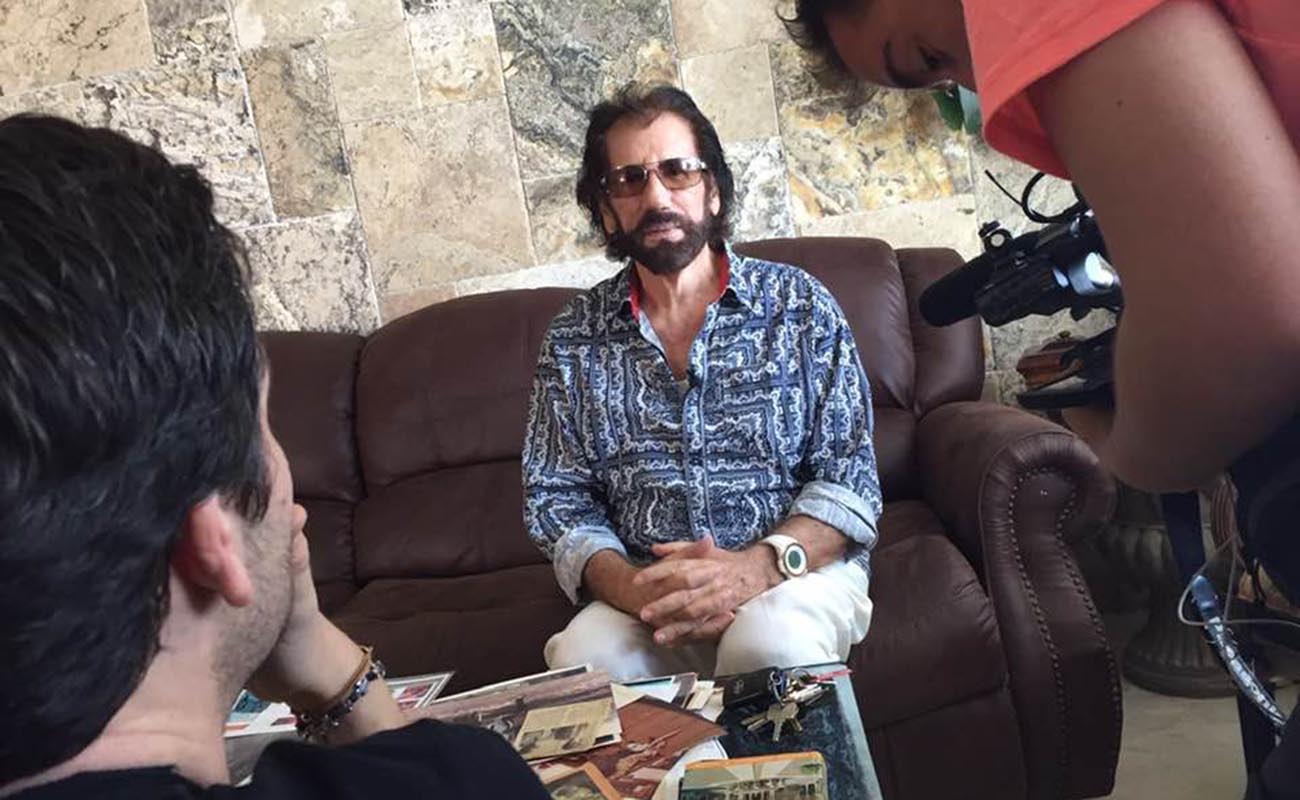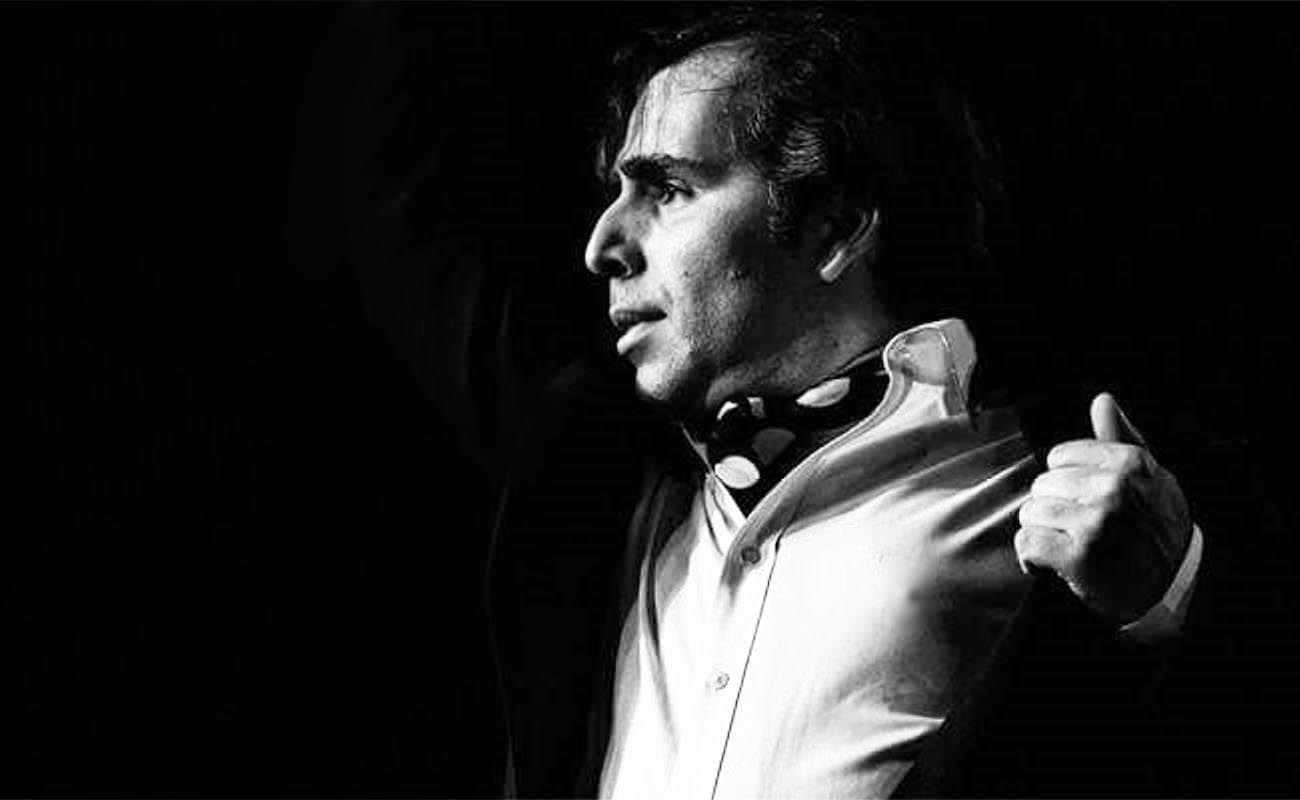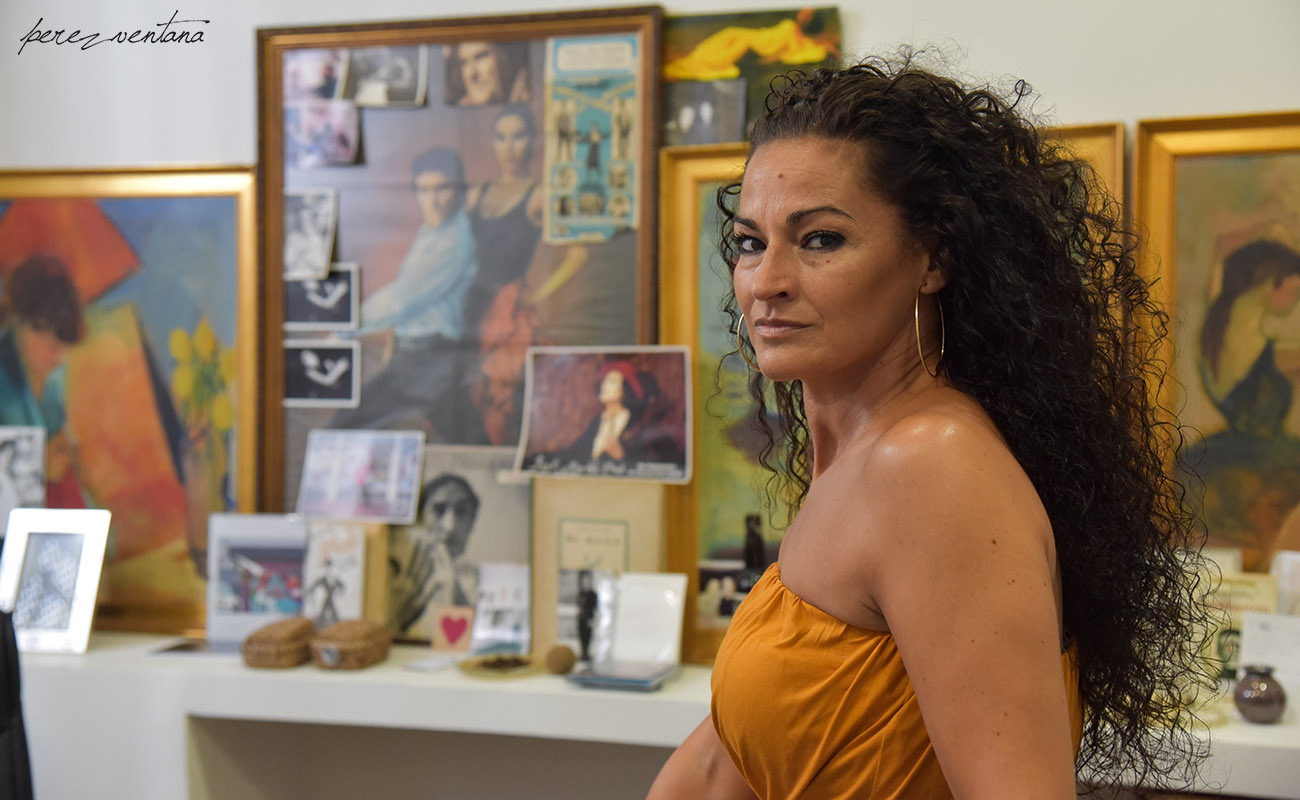Manuela Carrasco: «I want to teach young people even how to wear a flower in their hair»
The bailaora from Seville, who on May 29th will be bestowed the ‘Compás del Cante’ award — flamenco’s Nobel prize —, announces to the world the creation of the Manuela Carrasco Foundation: «I want flamenco to be flamenco, not something else. It can’t go astray».
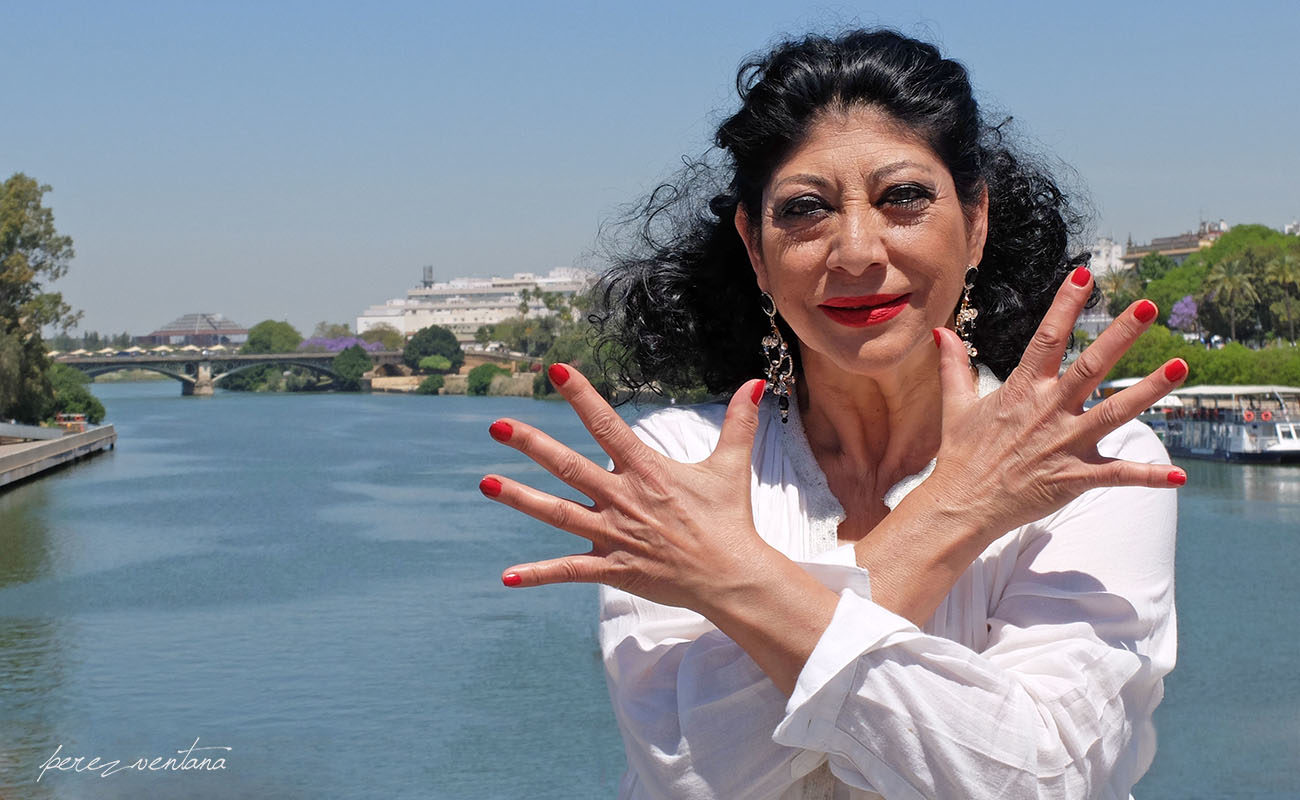
The most prestigious flamenco award, the Compás del Cante, bestowed since 1984 by the Cruzcampo Foundation, has a name written for its 32nd edition: Manuela Carrasco Salazar (b. Seville, 1958). It will be awarded on May 29th in a gala hosted by Box Cartuja. There she’ll be showered with olés a compás, because her art has always been aligned with what baile is supposed to be in the land of María Santísima, Seville. Solid, deep Gypsy baile. She’s the leading star of her school. And her name will be even more immortal in a few days, with the opening of the Foundation she has created to preserve the purest flamenco and to give visibility to the role of Gypsy women in society.
We sit down at the el José Luis Restaurant, on Plaza de Cuba Street in Seville’s Los Remedios district. We are with Manuela, her husband Joaquín Amador, their daughter Manuela Amador and Manuel Santiago. The latter two lead the Fundación Manuela Carrasco mentioned above. We’ll discuss that later. Let me remind you, dear readers, that over twenty years ago, we interviewed them at the old Nova Roma patisserie, a few steps down the road, in Asunción, which is now one of those franchises that multiply like rabbits. Local businesses yield to the weight of the big chains. Walking on Avenida de la Constitución, from the cathedral, there are nothing but franchises. The only exception is Bodeguita Casablanca, across Archivo de Indias, visited one day by King Juan Carlos, who ordered ham and bean tapas. Why are we talking about this? Perhaps because in flamenco franchises are also multiplying. «Yes, I agree, these are very strange days in flamenco. Everything sounds the same», says The Godess.
– Flamenco interviews also seem all the same. “What’s your opinion about that girl? What do you think about that guy?”
– Don’t ask me about those two, hahaha!
– Manuela, what does it mean for you being awarded the Compás del Cante?
– Look, through my whole life I think I’ve planted some seeds. It’s good to be appreciated for my career, for what I’ve done in behalf of flamenco. I’m thrilled to be appreciated, valued.
– The Compás del Cante is like flamenco’s Nobel Prize. Does it make you feel respected?
– In my opinion it’s a mayor award, yes. I’ve been awarded the Premio Nacional de Danza and the Medalla de Andalucía, and soon I’ll be awarded Medalla de Oro al Mérito en las Bellas Artes. This is an accolade that I’m truly grateful for.
– Is it any different than the other trophies in your shelf?
– I’m a very humble person. I appreciate all awards I’ve been given, because I’ve earned them through hard work. I’ve been performing on stages since I was a little girl. It’s been very hard climbing up this little step. It’s an honor.
– Among the artists awarded the Compás, we have Pilar López, Mario Maya, Matilde Coral, Milagros Mengíbar, Cristina Hoyos, Merche Esmeralda… Do you feel you belong in this crowd?
– All I can say is that when I come on stage, I give it all, I leave my soul in there.
– Does this award come at a good time?
– All awards are good, particularly if they’re awarded in our lifetime. Everything has its moment. Yes, to be sincere, I should have been awarded this accolade earlier. Of course. Oh well, I’ve been awarded it now. All good. I don’t say this with bitterness. I am very thankful.
– We only wish you would perform in the award ceremony.
– Well, there will be Riqueni, Alba Heredia, who is very flamenca, and Rancapino Chico, who is one of the best. Just imagine all his experiences, all he has seen.
«Pure flamenco can’t possibly reek of cemetery, because it’s the greatest thing we have in Spain. There are many good artists, so there’s no need to trash flamenco with all the foolish things that are being done»
– Why have you created a foundation on your name?
– We will take in all the great artists, the ones that are left, because the trend now is flamenco light. There are still great bailaores and bailaoras, great guitarists. Masters that we have but can’t find any work. They are the guides for the young artists, the references showing the way for young people. Nowadays, only young artists get hired. No, the masters should work, too. Those who perform pure flamenco, not distorted flamenco. This is necessary to preserve flamenco. Otherwise, with the way things are going, in a few years there will be no flamenco left.
– [Manuel Santiago] We are in the administrative process, just about to get started. Yours is the first media outlet we’ve talked about this. Our main goal is to promote research to preserve a style of flamenco in danger of becoming extinct, so that flamenco’s heritage doesn’t get lost. We are not against anything or anyone, but it seems that the type of flamenco that Manuela represents is being neglected.
– Recently, we heard Antonio Canales say something similar at Utrera’s Tacón Flamenco. We must pay attention to the masters.
– All I ask is respect, like I had respect when I started dancing. I’ve always respected the great artists, because they represent the best flamenco, the purest flamenco. That’s what must be preserved. Including the way artists dress. Because I can’t conceive getting on stage without a flower in my hair, without a peina, without a mantón. Now you see bailaoras with a little braid and a ribbon in their hair. No, that’s wrong. Like the saying goes, one image is worth a thousand words. When a bailaora comes on stage properly dressed, even if her performance is not great, she deserves respect. I think to myself, “ole, that’s how people should get on a stage”. To those who want to become rich with something that is not flamenco, I tell them “darling, don’t call it flamenco, use some other word”. There is something I’m itching to say. I read an interview of Andrés Marín where he said that pure flamenco reeks of cemetery. No, sir. Pure flamenco can’t possibly reek of cemetery, because it’s the greatest thing we have in Spain. There are many good artists, so there’s no need to trash flamenco with all the foolish things that are being done. I have to tell the truth and say it how it is.
– Creating a foundation in your lifetime. I can’t think of any other flamenco artist who had done such thing. Antonio Gades created his foundation in 2004, the year when he died.
– I want to preserve flamenco, so that flamenco is truly flamenco, not something else. I want to prevent it from disappearing. I’ve been striving for this for forty years. Because flamenco is not just a choreography, or a scenography. Sure, it can all look very nice, but the main thing is the artist. All the great stars — Pilar López, Matilde Coral, Farruco — danced with a white light. We were the scenography. Flamenco has no more history than art itself.
«Every time I get on stage it feels like a premiere, although nowadays I feel more anxious»
– In an old interview, on occasion of your 1996 production La raíz del grito, you stated that traditional Andalusian flamenco was in danger. Is this still the case?
– Nowadays, even more so. At that time, we still had Paquera, Chocolate, Farruco, Rafael El Negro, Matilde, Fernanda, Bernarda, Pansequito, Juan Villar… There were lots of good artists singing and dancing. Back then, I could see it coming. I don’t like what is happening today. There are very few artists left who still have flamenco’s flame burning inside, who still respect it. Ten out of a thousand. The other day I was in New York with two great scenographers, Claudio Segovia and Héctor Orezzoli Yuyo. I argued with Claudio because he wanted me to wear a white dress when dancing a soleá. I told him, “my darling, since the beginning of time we’ve worn dark clothing”. He replied, “no, you are a ghost in the night.” The scenography distracts the dancer. The artists are the scenography. If it’s a big production, we can add just a handful of details, without going overboard. Good lightning and good sound are enough. It’s all flamenco needs. It’s hard to be an artist by our own merits
– [Manuel Santiago] It’s not that there aren’t talented artists nowadays. The problem is that innovation is the only thing that’s being rewarded. That’s why in our foundation we emphasize the importance of having references, role models. But the new generation is quite talented.
– [Manuela Amador] The point of the foundation is to promote and preserve flamenco. And particularly to give visibility to the role of Gypsy women in society, in arts and in literature. This is something really necessary.
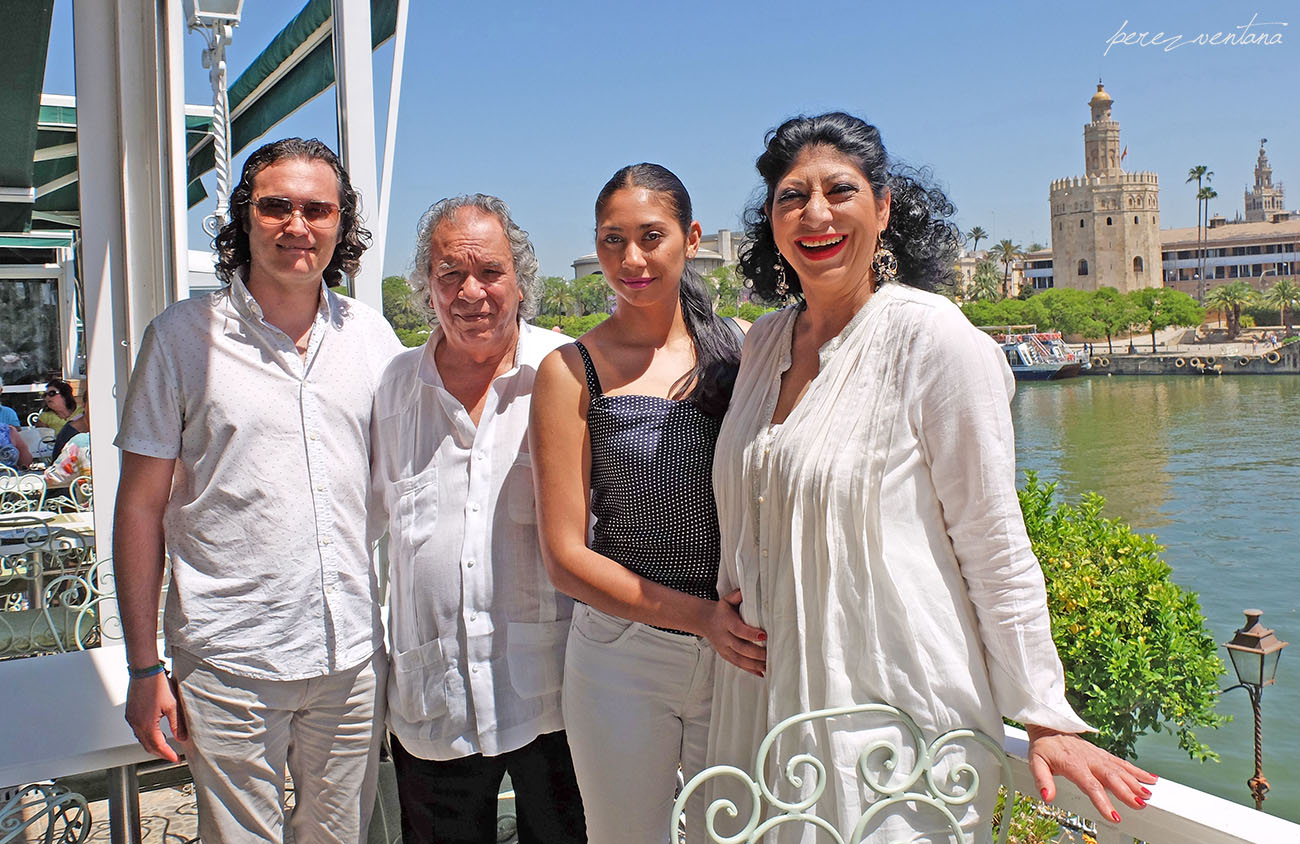
Manuel Santiago (manager of the Manuela Carrasco Foundation), guitarist Joaquín Amador (husband of Manuela), Manuela Amador (president of the Foundation) and bailaora Manuela Carrasco, at the Riogrande Restaurant (Triana, Seville). Photo by Quico Pérez-Ventana
«I can’t attend many flamenco shows these days, because I either fall asleep, or end up depressed, with heart palpitations, and then I have to be driven around all of Seville until I feel better»
– Tell us something positive about baile flamenco in our days.
– I admire art. A bailaor doesn’t have to be Gypsy to dance or sing well. It’s true that Gypsies, not all of them, when God gives them the gift of playing the guitar, singing or dancing, it’s something else. Yet, there are also people who love flamenco and spend a lot of time in studios, something I cannot do. I respect this, and I admire such hard work. I go to theaters to see this. But I have no time for those who distort and undermine flamenco. There are great young artists, capable of wonderful footwork, possessing immense talent and wonderful ideas. Yet, flamenco is not just using the feet. We must know how to stop. There are moments when we should stop and use our arms and our upper body. Both women and men. And that’s very difficult to do. So, people don’t even bother. They think that the most footwork they do, the best they are. No sir. Art is more important than footwork. And if you can handle all that, may the Lord be praised.
– Who is capable to stop and dance proper flamenco nowadays?
– I really like Farruquito. He’s the only one who dances in this style nowadays.
– It’s always been said that you are the number one dancing por soleá. Doesn’t anyone else dance like you do?
– Everyone has their own personality. Everyone dances according the gift God has given them. What happens is that I feel at ease in the soleá, I feel it’s my palo. But that doesn’t mean I’m the best in the whole world dancing por soleá. There are many people who dance very well por soleá. Everyone dances in their own way.
– [Manuela Amador] In my opinion she’s the best dancing por soleá, it’s like she falls into a trance. You can watch her five hundred times dancing por soleá, and each time it’s in a different way. I always end up asking, “mom, how did you manage that remate?”
«In the old days, aficionados knew what they were watching. They got excited and gave two hundred timely ‘oles’. They knew what true flamenco was. Nowadays, young people don’t know what flamenco is»
– You are flamenca until the end of your days.
– I’m a Gypsy from both sides of my family, that’s all I have to say.
– What has flamenco given you, and what have you given flamenco?
– Flamenco has given me a lot. It’s the way I live, the way I feel. I’m not sure if I have contributed anything to flamenco. The truth is that every time I get on stage, it feels like a premiere. Every time I perform, I do it with more excitement, more gusto. But now I feel more anxious, because as time goes by, there is more responsibility, and it gets scarier. Yet, I get on stage to give it all. I leave my soul on stage, because that’s what I want. That’s what I like, my reason to be alive
– Looking back, what do you feel the proudest of?
– I feel proud of who I am. I was born in a humble house, a Gypsy house with many hardships. There were many siblings. I had to dance because there was no other way. I’m satisfied by what I’ve done. I’ve helped at home, I’ve become a renowned artist. When I go some place and people address me as maestra, tears roll down my cheeks. Why maestra? I’ve gone through many hardships to become who I am, and I’m not much. I’ve had to get dressed up in washrooms for lack of dressing rooms in some venues I’ve performed.
– What about looking ahead?
– I have plenty of work, thanks God. I have my regular show, which I always improve upon. But at this moment, my biggest excitement is the Foundation. They did it all behind my back, I knew nothing about it. Just look at the great people who joined us in this project: Fermín Bohórquez, Cayetano Martínez de Irujo… They are committed to the Foundation. What I want is for everyone to sing and dance in their own style, but it has to be pure flamenco. We can’t lose it. I want to teach young artists even how to wear a flower in their hair.
– [Manuela Amador] We want to show the world codes of reference when it comes to perform flamenco. That’s all. [Her mother adds «she has a good head on her shoulders»]
«Why does this woman come naked on stage? Besides, pregnant. Who told her that this is allowed in flamenco? I’m all for evolution, but not revolution, honey»
– There are people who oppose flamenco purity. Some even say that there’s no such thing.
–Of course there is such thing, how can it not? There are still great artists protecting it. What has to be done is to strive for flamenco, avoiding those fusions. It annoys me when they try to sell this contemporary music with flamenco. It has no sense. Other musical genres can enrich flamenco, for sure, but I don’t see how contemporary music fits within flamenco. I don’t mean to hurt anyone. I’m just standing up for flamenco. Twenty of thirty years ago, aficionados knew what they were watching. They would get excited, giving two hundred timely ‘oles’. They knew what art was. They knew what true flamenco was. Nowadays, young people don’t know what pure flamenco is. They don’t know it. So, if Israel does that with his hands and with his teeth, if Yerbabuena dances in her own way — and I admire her as bailaora, she’s really good —, if Rocío Molina comes naked on stage, it’s because they don’t know what flamenco is. That’s not flamenco, with all my respect with what they want to do. It’s all worthless, in my opinion. It’s misleading young people. Are these strong words? It’s just the way it is.
– In any event, your voice has weight.
– I talk about what I know about. From the beginning of time, and you can ask Matilde, flamenco has been very reserved. The most clothing, the better. When Manuela Vargas performed sleeveless, we felt a bit uneasy. Why does this woman come naked on stage? I cannot accept this. Besides, pregnant. I don’t know what’s the point of her show, and I don’t want to know. Who told her that this is allowed in flamenco? I don’t get it. Things should be done the right way. I’m all for evolution, but not revolution, honey.
– So, what kind of flamenco is left?
– I can’t attend any flamenco show these days. Just those of Farruquito, because, young as he is, he performs flamenco as it’s supposed to. I leave his shows feeling happy, having given him dozens of oles. I can’t go to other flamenco shows, though, because I end up depressed, with heart palpitations, and then I have to be driven all around Seville until I feel better, or until I fall sleep. There are things that shouldn’t be allowed in flamenco. I say this in general, I’m not pointing fingers at anyone. Please, dance flamenco, those of you who know how to dance flamenco. Don’t make stuff up. Flamenco has already been invented. There are no innovators anymore. It’s all imitation, and bad imitation at that.
– How can an art evolve, if everything has already been invented?
– We witnessed it, didn’t we? Thirty, forty or fifty years ago, each artist had their own personality. El Güito: unique, to die for. Mario, great bailaor. Matilde, great bailaora. Carmen Amaya, I don’t even know how to describe her, in my opinion she was the number one. Pilar López was a ballerina, but when she had to dance flamenco, she did it with her own personality. Nowadays everyone looks the same. Flamenco should be enriched, danced with purity. If someone doesn’t know how to dance pure flamenco, for not having been born with this gift, they can dance it with elegance, that is something that can be learned in academies, studying flamenco for many years. But don’t distort flamenco, I beg you.
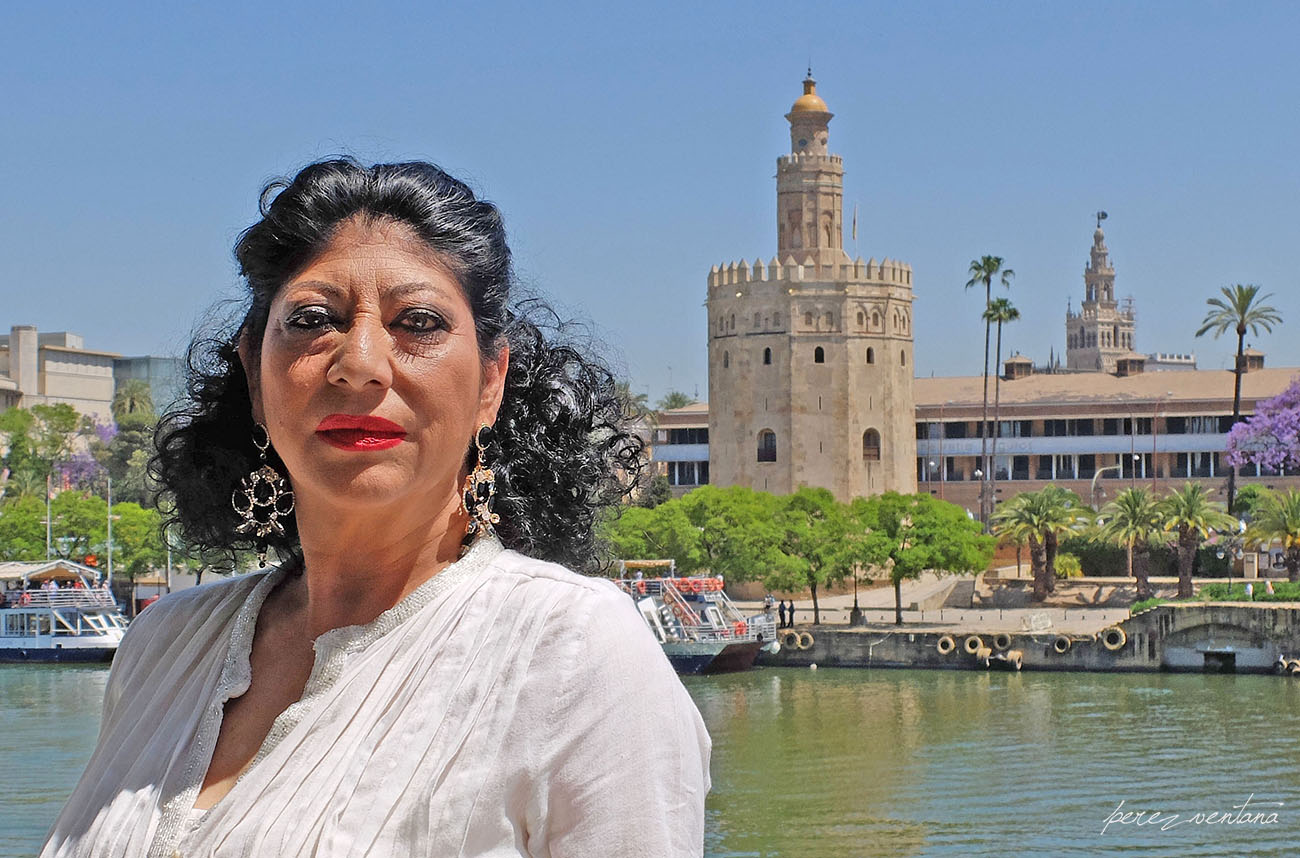
Manuela Carrasco, with the Torre del Oro and the Giralda in the background. Restaurante Riogrande (Triana, Sevilla). Foto: Quico Pérez-Ventana




